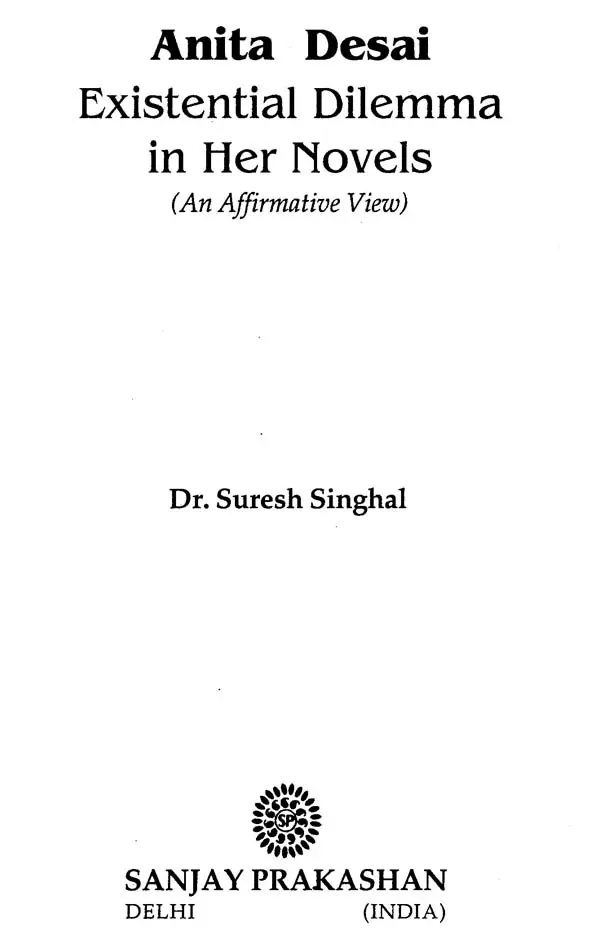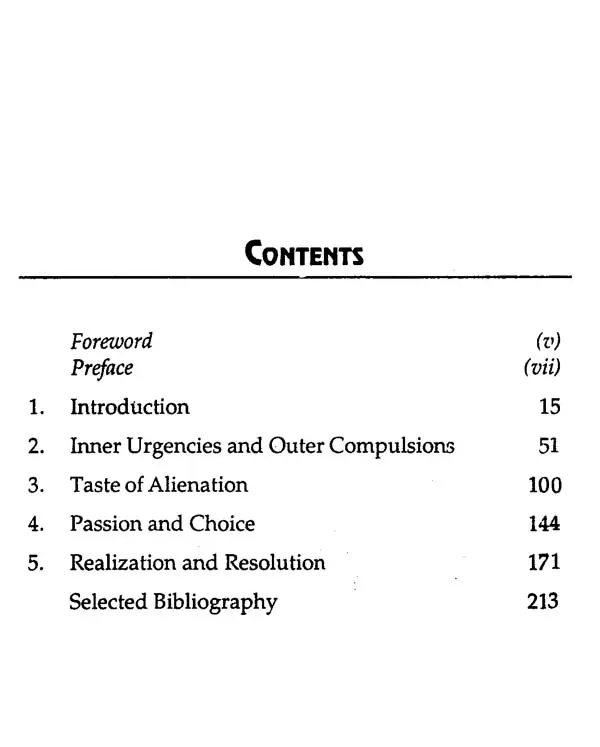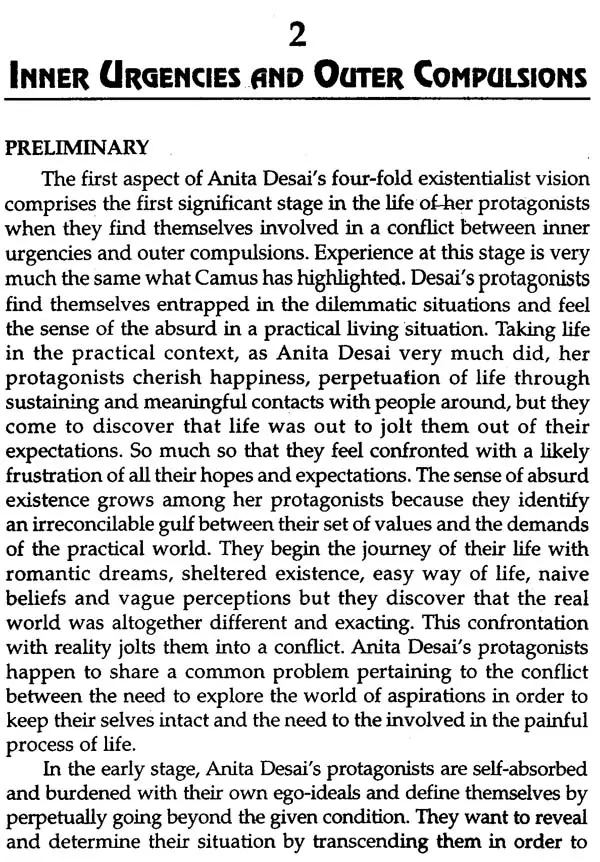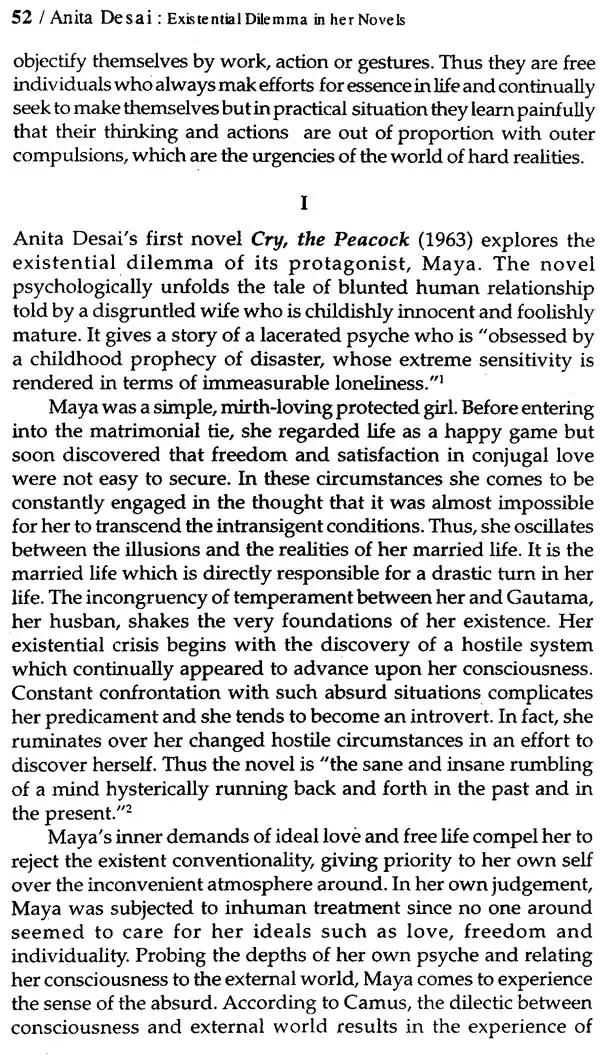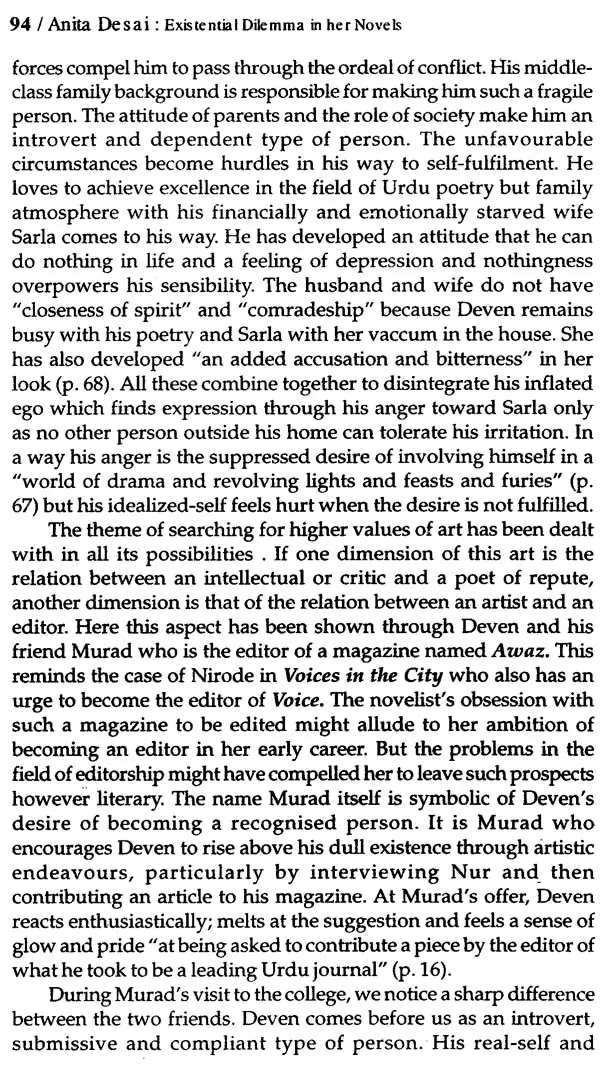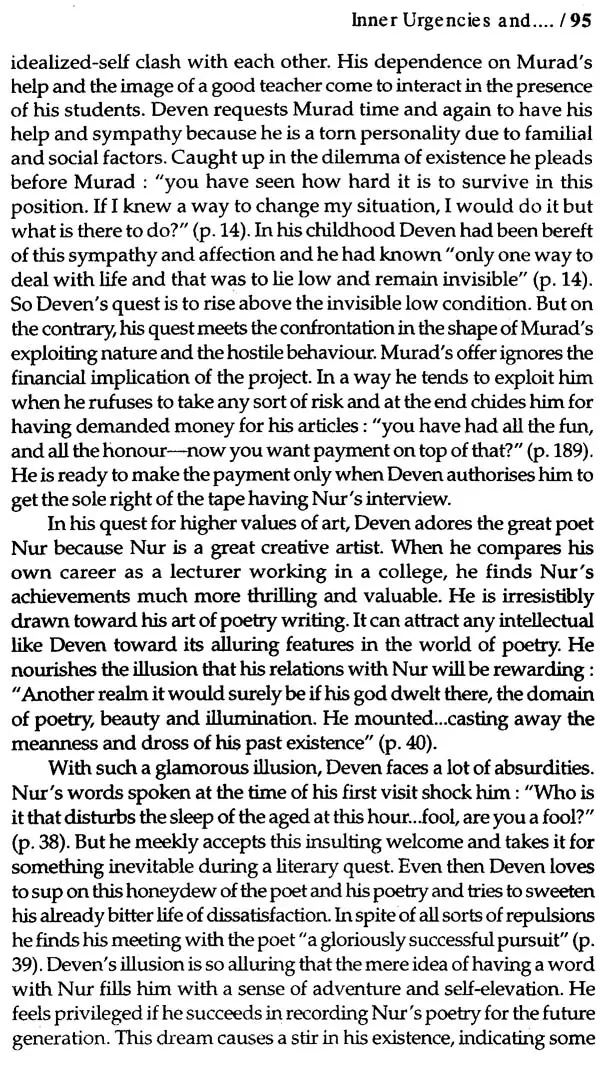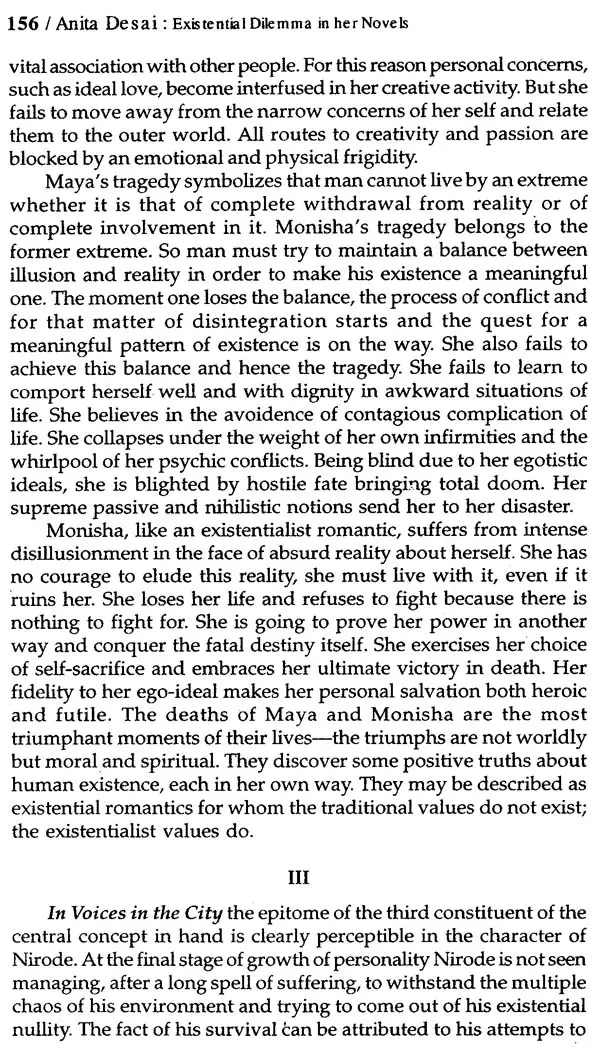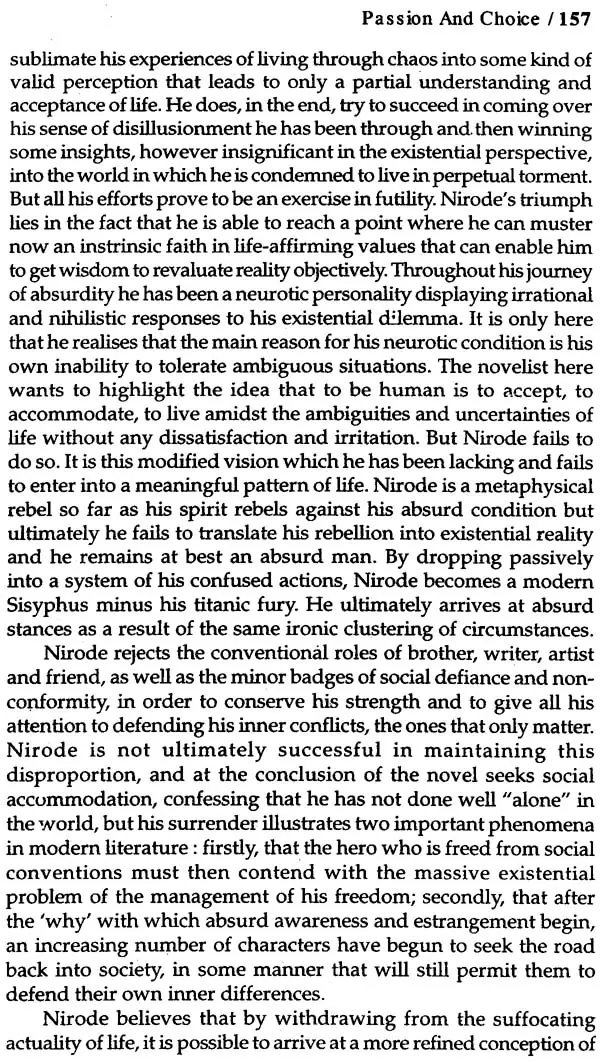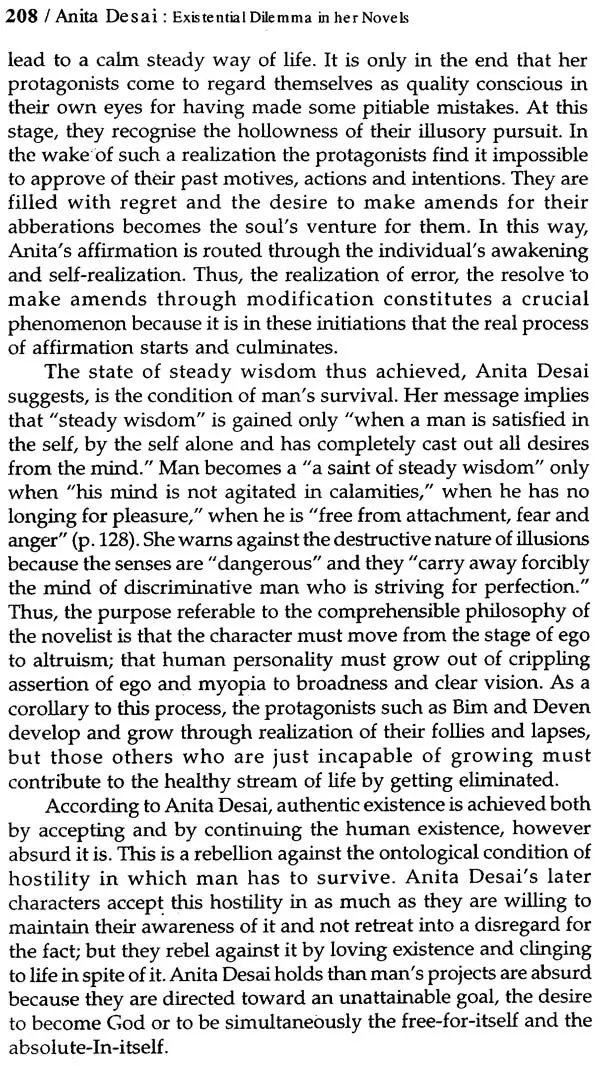About the Book Unlike most of the modern writers who misinterpret man's true condition by accepting bitterness about absurd existence, Anita Desai holds the view that the writer must perpetually fight for the true depiction of man's condition and the mystery about it. During the execution of her process of exploration of this mystery, Anita Desai calls for a fresh approach to reality, holds life as a sacred asset and seeks to communicate its richness, power and mystery through ideas that contradict the formidable stances of alienation and absurdity. Ordinary life, feels Anita Desai, has always been man's true condition and that its exclusion from art is a step toward in authenticity and error. Art, for Anita Desai, seems to be a purgation of consciousness having something to do with the achievement of stillness in the midst of chaos. It seems that for Anita Desai the great imperative for art is to dissociate itself from theoretical abstractions and ingenious explanations of reality and try to restore the magic or enhancement of life which is innate in every human being. The obstacles attending the realisation of such a vision in art constitute for Anita Desai the essence of the problem of affirmation above and be yond particular stances of world-views. Though Anita Desai is conscious of the fact that man is basically a stranger and an exile in this world, she does not hold the view that man's exile is without remedy. Rather she has the hope of a promised land of steady wisdom of life which involves her belief that man must face his trap-situation lucidly and he must not brood over the sense of the absurd.
Foreword Exasperated at the way the term existentialism was ban died about without a proper understanding of it, Jean-Paul Sartre recounted the following story in 1946: "I have lately been told of a lady who, whenever she lets slip a vulgar expression in a moment of nervousness, excuses herself by exclaiming, 'I believe I am becoming an existentialist."" He concluded that "ugliness [was] being identified with existentialism." Sartre was also speaking of how it had then become fashionable and "people cheerfully declared that this musician or that painter is 'existentialist.... [I]ndeed, the word is now so loosely applied to so many things that it no longer means anything at all." But that was a good 60 years ago. One supposes now that everyone understands the term so well that no definitions are called for. In fact, after enjoying decades of popularity in India, when all one needed to do to confer greatness on a writer was to dub him/her "existentialist," now the concept seems somewhat dated. Mankind seems to have slipped into extreme skepticism and cynicism of a different kind than the ones which had seen the rise of atheistic existential philosophy of Sartre's time. In the postmodernist era, when the term 'essence' has itself become a term of abuse, the existential formulation, "existence preceded essence" can hardly be seen as radical.
In women's writing what is valued is a feminist critique of patriarchy, and it is fashionable to attribute such motives to most women writers. Since some major Indian women's writings resist such straitjacketing, there could be more profitable ways of reading their texts. Anita Desai's is a case in point. Some critics have avoided looking at her works through the feminist lens. Some others have insisted on using her works exclusively as feminist even in the face of her disavowal of the creed.
Preface There is little doubt that as an important figure in world literature Anita Desai (b. 1937) has received a lot of critical acclaim, yet she merits to be assessed in new contexts. What distinguishes her from other Indo-English novelists is her primary interest in the individual and the psychological complexities of his inner world. In the novels of Mulk Raj Anand, Raja Rao, R.K. Narayan, Ruth Jhabvala, Kamala Markandaya, Bhabani Bhattacharya, Manohar Malgonkar, Khushwant Singh etc., the stress has been on the contemporary problems-social, economic, political and cultural. But Anita Desai is not interested in the traditional themes as taken up by har predecessors. She deals with the psycho existential problems of her characters. Her main concern is to depict the psychic states of her protagonists at a crucial juncture of their lives. Her central theme is existential predicament of an individual. Though there are novelists such as Arun Joshi, Amitav Ghosh, Shiv K. Kumar, Bharathi Mukherjee, Mirnalini Sarabai, etc., who have come to establish themselves as the rightful successors of Anita Desai, yet they have to read the literary heights. Thus, Anita Desai is the one novelist today who has added a new dimension to Into-English fiction. The reader's first impression of reading Anita Desai is, therefore, one of the brave originality and uniqueness.
Unlike most of the modem writers who misinterpret man's true condition by accepting a bitterness about absurd existence, Anita Desai holds the view that the writer must perpetually fight for the true depiction of man's condition and the mystery about it. During the execution of her process of exploration of this mystery, Anita Desai calls for a fresh approach to reality, holds life as a sacred asset and seeks to communicate its richness, power and mystery through ideas that contradict the formidable stances of alienation and absurdity.
Introduction The purpose of this study is to analyse the novels of Anita Desai (b. 1937) in the context of existential dilemma with special reference to Albert Camus (1913-1960). Her novels are the narrative dramatizations of the comprehensive phenomena of man's existential dilemma in terms of intense experience and possibilities of resolution. Within this broad framework, Anita Desai's novels portray man's awareness and experience of life's tragic intensities such as anguish, alienation and meaninglessness verging either on nihilism or sustenance as the case may be. It is within this context that she depicts characters as individuals "facing, single handed, the ferocious assaults of existence" so as to discover meaning in life. Through this experimental exercise they seek to plug what Camus described as "the undiscovered orifice" and "to understand life as... destiny."2 Anita Desai is thoroughly aware of the predicament of man living in the contemporary society lost to values, higher concepts and even God. Not finding sustenance in time-worn beliefs and traditional convictions, Anita Desai's protagonists feel obliged to live life on the individualistic plane. It is this felt sensation in living situations which ultimately results into existential crisis for them. She recognises this reality both within and outside the phenomenal world. She imaginatively and artistically captures this phenomenon in her novels, thereby giving a consistent form to the otherwise shapeless facts of human existence. The study of her novels come very near Trilling's fundamental visualisation of the purpose of novel-writing, especially in the existentialist context:
"The novel is a perpetual quest for reality, the field of its research being always the social world, the material of its analysis being always manners as the indication of the direction of man's soul."
Book's Contents and Sample Pages
